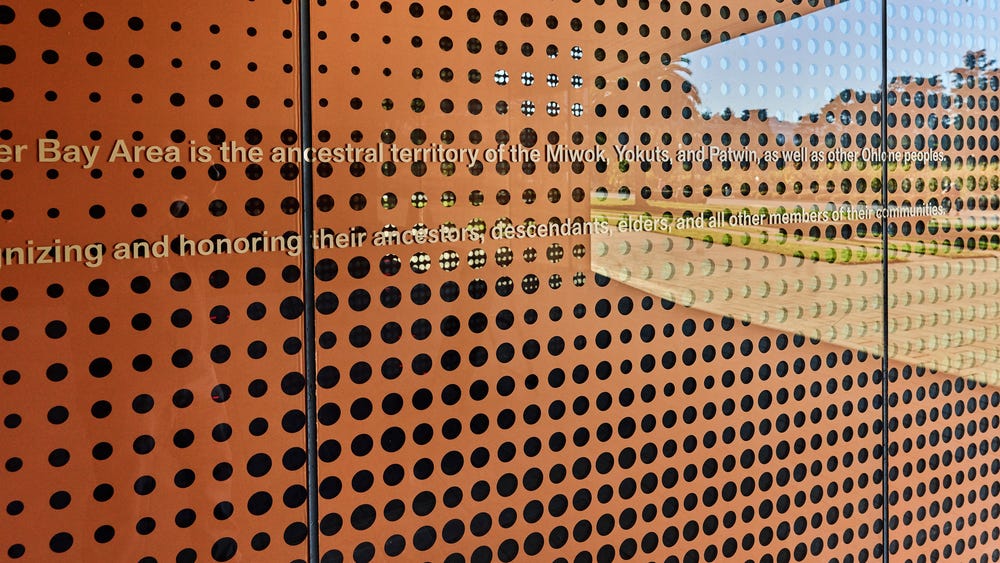Photograph by Randy Dodson, © Fine Arts Museums of San Francisco
Land acknowledgment
The Fine Arts Museums of San Francisco occupy unceded land of the Ramaytush Ohlone, who are the original inhabitants of what is now the San Francisco Peninsula. The greater Bay Area is also the ancestral territory of other Ohlone peoples, as well as the Miwok, Yokuts, and Patwin.
We acknowledge, recognize, and honor the Indigenous ancestors, elders, and descendants whose nations and communities have lived in the Bay Area over many generations and continue to do so today. We respect the enduring relationships that exist between Indigenous peoples and their homelands. We are committed to partnering with Indigenous communities to raise awareness of their legacy and engage with the history of the region, the impacts of genocide, and the dynamics of settler colonialism that persist.
Lincoln Park, where the Legion of Honor was founded in 1924, operated as City Cemetery from 1868 until 1898. When the park was created, many of the burials were relocated but the majority were not. Please join the Fine Arts Museums of San Francisco in honoring the memory of the thousands of individuals still buried on this land.
What is a land acknowledgment?
A land acknowledgment is a statement that formally recognizes and pays respect to the Indigenous peoples of a place. “Indigenous” is a general term that refers to the first inhabitants of a region. A land acknowledgment is a public recognition that is intended to raise awareness about the enduring relationship between Indigenous peoples and their territories.
Why do we recognize the land?
It is important to understand the history of the San Francisco Peninsula and the dynamics of settler colonialism in the region to create a broader awareness of this history. Acknowledgment fosters individual and group action to eliminate racism and uplift Indigenous voices and histories in the Fine Arts Museums’ programs and collections.
What is the appropriate pronunciation of the Indigenous names?
Acknowledgments
Jonathan Cordero, chair, Association of Ramaytush Ohlone; Deana Dartt, principal, Live Oak Museum Consulting; and Yve Chavez, assistant professor, University of California, Santa Cruz.
We work in ongoing partnership with, and in gratitude to, Native communities who generously share their art and culture with our museum and its visitors.
References
- Ramaytush Ohlone
- Honor Native Land: A Guide and Call to Acknowledgement, US Department of Arts and Culture
- Guide to Indigenous Land and Territorial Acknowledgements for Cultural Institutions
- Art Institute of Chicago Land Acknowledgment
